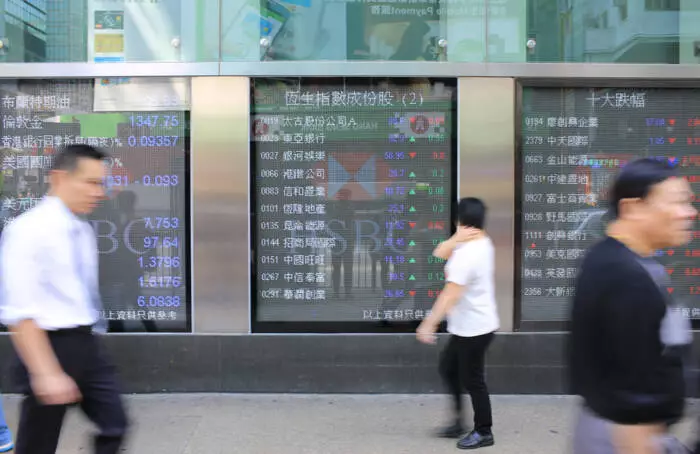In an extraordinary display of market resilience, the Hang Seng Index (HSI) witnessed a notable rally of 3.79%, marking its longest winning streak since 2019. Amidst a backdrop of uncertainty, characterized by ongoing trade tensions and concerns over tariffs, investors have chosen to concentrate on the encouraging economic signals from Beijing, particularly the government’s stimulus initiatives and robust corporate earnings. This strategic focus has proven lucrative, especially for the technology sector, which has taken the lead in propelling market gains.
The Hang Seng Tech Index paralleled the HSI’s performance, surging 6.03% and extending its own winning streak. Key players in this sector, most notably Alibaba, experienced significant upticks as the company exceeded revenue forecasts with an impressive 11.60% gain. Conversely, Baidu faced a downturn of 7.30%, a reaction largely attributed to its absence from a pivotal symposium in Beijing and a subsequent dip in quarterly revenue. Such disparities in performance within the sector underscore the volatile nature of tech stocks in response to broader economic sentiment and company-specific news.
While the Hang Seng rallied, mainland China’s equity markets exhibited resilience as well, with the CSI 300 and Shanghai Composite Index both posting gains. This upward momentum can be associated with investor optimism around potential domestic stimulus measures aimed at enhancing consumer spending, effectively offsetting fears related to ongoing trade tensions with the United States. Such a calculated approach reflects a broader strategy of seeking growth opportunities in the face of geopolitical challenges.
However, the commodities market painted a more complex picture during the same week. Gold prices continued their ascent, advancing for the eighth consecutive week to close at $2,936. Interestingly, gold even achieved a record high of $2,955. This flight to safety among investors reveals sentiment rooted in uncertainty, as risk aversion often drives up demand for safe-haven assets like gold.
On the other hand, the energy sector faced headwinds, with crude oil prices declining by 3.39% to settle at $70.557, attributed to concerns over a potential slowdown in the U.S. economy. Such fluctuations illustrate the delicate balance between global economic indicators and sector-specific performance.
Australia and Japan: Diverging Paths
The Australian market faced challenges, with the ASX 200 slipping by 3.03% due to a less dovish-than-expected statement from the Reserve Bank of Australia (RBA). Particularly impacted were banking stocks, which suffered losses following disappointing earnings results from major lenders. The Commonwealth Bank of Australia and National Australia Bank represented the most significant declines, illustrating the fragility of market confidence in light of contrasting earnings reports.
Meanwhile, Japan’s Nikkei Index recorded a 0.81% decline, influenced by the diminishing strength of the USD/JPY pair. The appreciation of the Yen, driven by heightened expectations for a Bank of Japan (BoJ) interest rate hike, poses potential risks for exporters who thrive in favorable exchange rates. The market response to this strengthening Yen indicates the significant interplay between currency valuation and overall corporate profitability, particularly for companies heavily reliant on foreign markets.
The upcoming days are poised to be pivotal for Asian markets, as economic indicators, geopolitical developments, and U.S. tariff dynamics come to the forefront. A lack of decisive stimulus measures could challenge investor sentiment, testing the appetite for equities amid potential volatility. Furthermore, any hawkish comments from central banks, particularly from the BoJ, could exert downward pressure on market sentiments, potentially triggering shifts in risk appetites across the region.
Market participants must remain vigilant amid evolving macroeconomic conditions that could affect market trajectories. A particular focus on the interplay between the USD/JPY exchange rate and broader market movements will be critical as traders position themselves for potential carry trade unwinds, which may ripple through to various asset classes.
The recent performance of the Hang Seng Index and its counterparts highlights a complex layering of investor sentiment shaped by domestic policies, sectoral dynamics, and global economic indicators. As markets react to both anticipated and unexpected developments, maintaining a keen awareness of these interdependencies will be essential for informed investment strategies moving forward.

